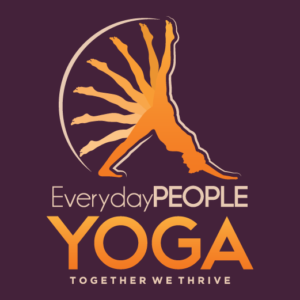Everyday People Yoga’s offerings utilize the practice of asana, or posture as a stepping-stone to the deeper practices that lead to higher states of awareness. These practices include: energy control, or pranayama, chanting, meditation, and study of ancient scriptures. The classes here are approached as moving meditations, where each movement has a corresponding breath. This allows us to focus, and hence calm the mind, to allow for the awareness to expand. While posture can serve as a useful tool, it is important not to lose sight of the original intention of yoga.
Yoga is an ancient technology that developed at least 8,000 years ago that wrestles with the problems posed by the untrained mind. Yoga is derived from the Sanskrit root yuj, meaning to yoke, bind, or bring together. Recent excavations of the ancient Indus valley civilization reveal soapstone seals with yogis seated in meditative postures. These seals are said to date from 6 – 8000 BCE!
Traditionally, seekers would travel to the forest/mountain dwellings of teachers, known as gurus (one who removes darkness), and ask to be taught esoteric yoga practices. Their commitment to transformation and willingness to trust their teacher unconditionally would determine whether they would be accepted as students. Once accepted, they would live and study in the home of the guru, or gurukul. While the guru’s role was to serve as a guide for those wishing to help navigate across the ocean of ignorance, the student took care of the guru by helping to provide food and other physical necessities. This was an unspoken agreement that continues to this day in Eastern lands such as India, Nepal, and Tibet.
The practices were initially passed down orally in an unbroken lineage, known as the guru parampara, for millennia. Teachings were transmitted directly from guru to disciple – they were both recited and chanted for the sake of preservation. Eventually many well-known techniques were written down – these can be found in texts such as the Yoga Sutras.
Ironically, the Yoga Sutras dedicates only one aphorism to postures – Sthira Sukha Asanam. This translates into “Posture should be firm and pleasant.” That’s it! The sutras go on to list the eight limbs of yoga, among which posture is only one.
While the practice has changed considerably over the millennia, the intention has remained the same: to control the restless mind in order to reveal states of peace and happiness. Once rediscovered, these states of being then allow the practitioner to commune with his/her divinity. The goal of yoga, therefore, is to achieve perfect health in mind and body, so that the spirit can remember its true Nature.
Why is it that a large majority of yoga taught here in the west focuses entirely on posture? Meditation is often pushed aside in favor of workout oriented classes, where how the pose looks, aka “alignment,” is more important than how it feels, or the awareness of the movements. Chanting of any sort is typically taboo, as is the use of Sanskrit (the language of yoga!). To make matters worse, teachers are often pressured not to speak on spiritual subjects, especially when teaching at gyms and schools. Has yoga in the west been reduced to fancy stretching, devoid of its divine aspect?
The answer is yes and no. One could quite easily limit the practice to fancy stretching, if the intention revolves around enhancing the physical body. It isn’t wrong to want to feel better in your body – it becomes a limitation when it is the entire focus of the practice. Fortunately, yoga has so much power to transform, that sometimes practitioners who start out hooked by the workout end up lingering to experience the bliss of meditation!
The point of this discussion is to broaden our horizons about the vast subject of yoga. Remember: the pictures in the magazines are depicting one small aspect of a science that began with the oldest enduring civilization.

